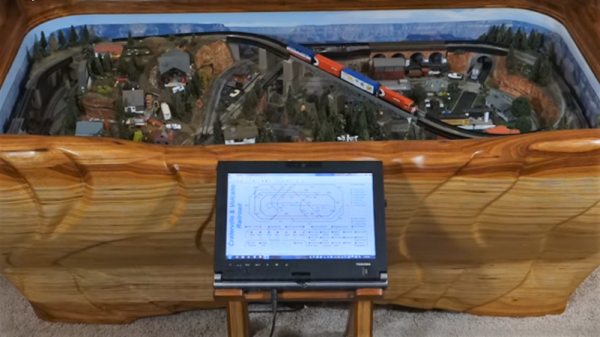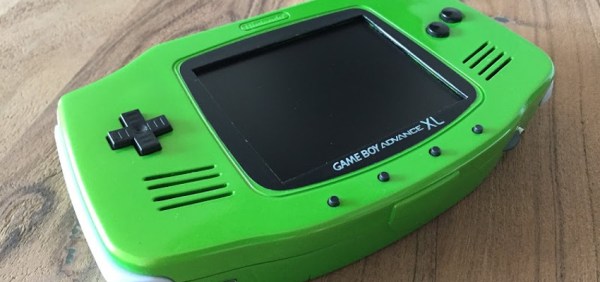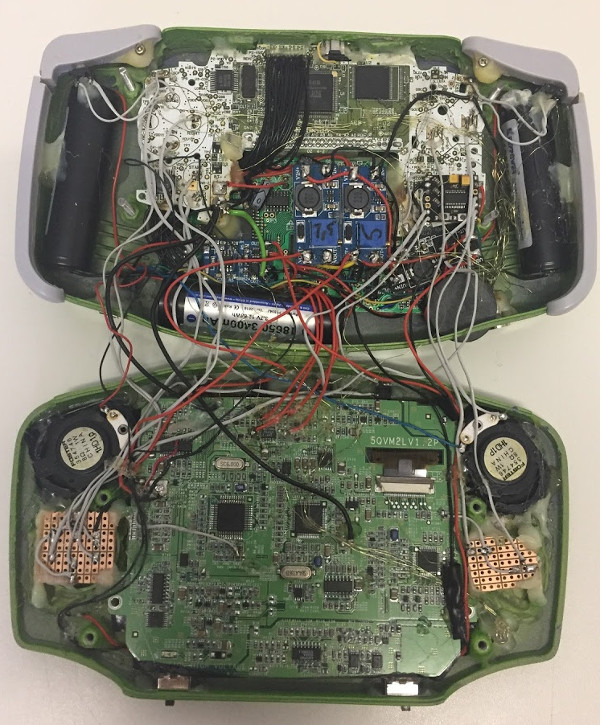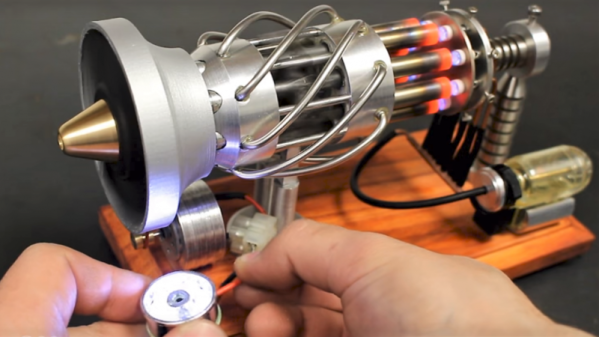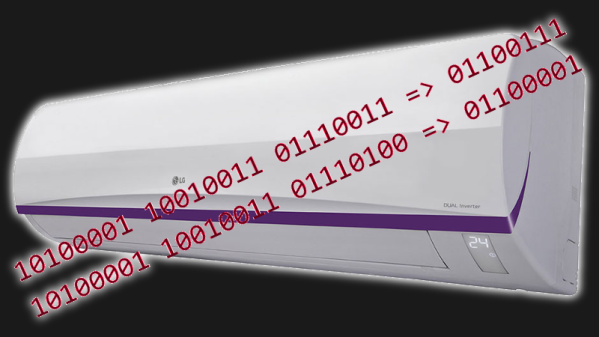For some, the allure of a real, physical world that you create and control is overwhelming. Combine that with a love of trains, and you get the model railroad. Some are incredibly detailed, and it seems like the larger the layout the better. Not everyone has the real-estate to devote to such a hobby, though, and moving down to N-gauge railroads is often the key to scratching the model railroad itch in a confined space.
But [Chris Plumley]’s complete N-gauge model railroad in a coffee table takes the concept to a new and tiny level. The superlatives to describe this layout are many and begin with the coffee table itself, a free-form sculptural design intended to evoke the natural contours of a landscape. Removing the lid reveals an intricately detailed world that rises up on a lift. The mainline train and a two-station trolley line ply the imaginary world under full computer control, complete with sound effects and animated lighting. An LCD screen stands in for a drive-in movie theater — remember drive-ins? — and a house fire rages on, never to be quenched by the arriving fire engines. And as a bonus, the locomotive has a dash cam to provide an engineer’s eye view of the layout. The attention to detail is wonderful, but the kicker is that this layout has existed in one form or another for sixty years. Talk about persistence!
If you’re intrigued by combining the world of microcontrollers and model railroads, you should really check out this tutorial to get started.

